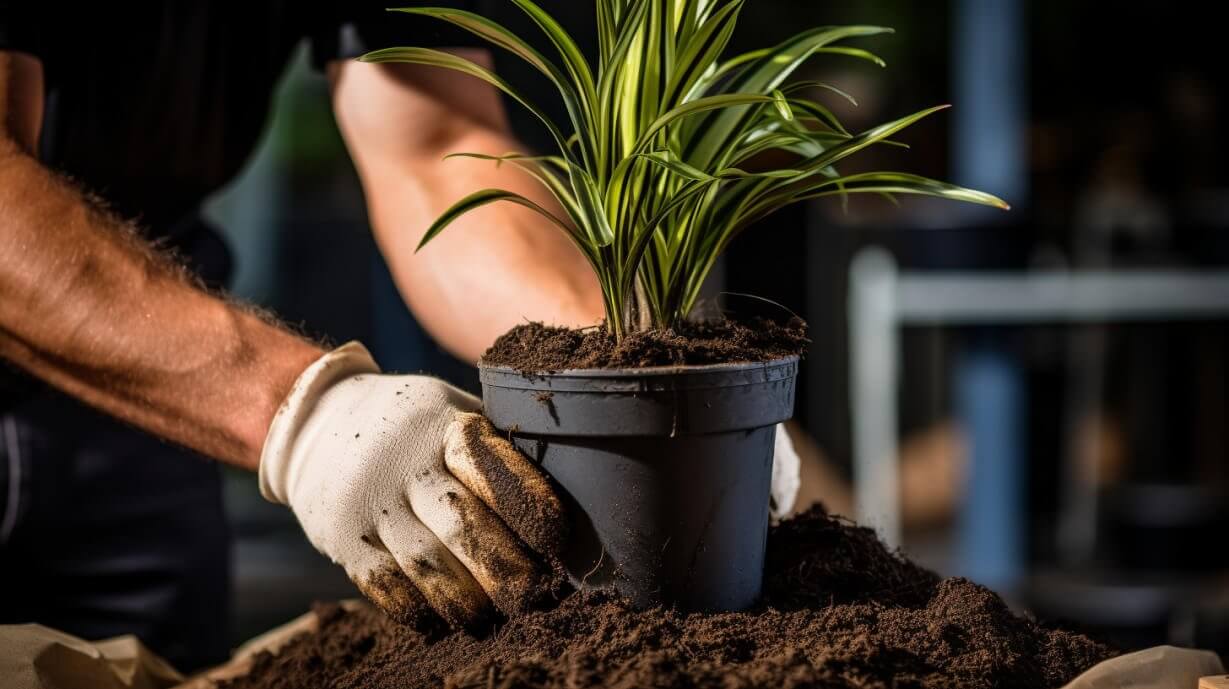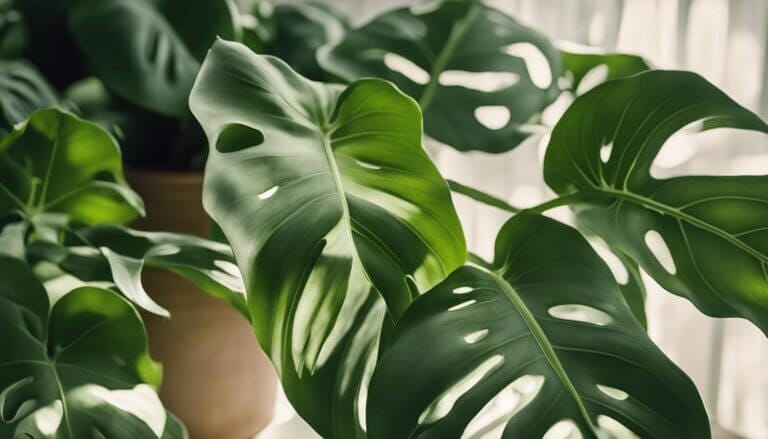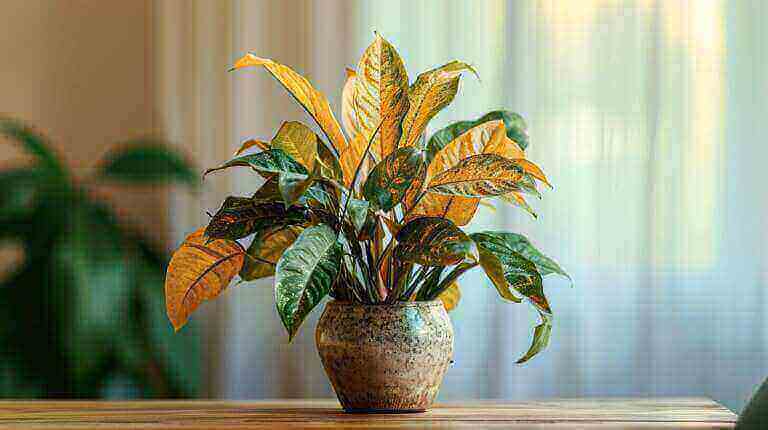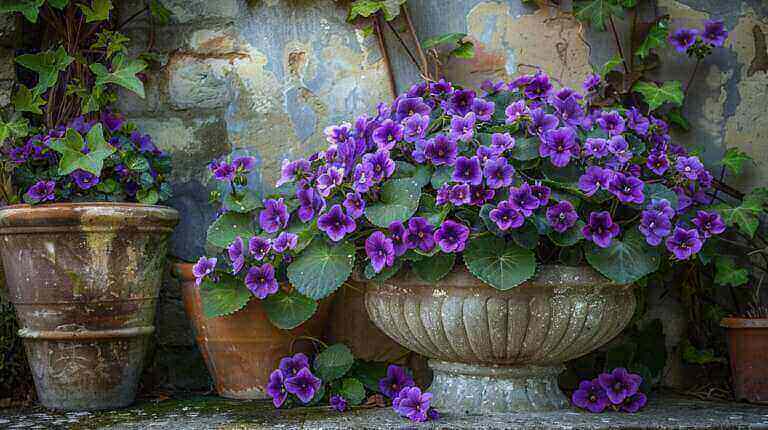How to Repot Dracaena Plant: Step-by-Step Guide for How to Repot a Dracaena
Dracaena marginata is a slow-growing plant. However, repot dracaenas plant at the right time and using the proper techniques is crucial for its overall well-being and vitality. In this comprehensive guide, I will take you through the step-by-step process of repotting a dracaena plant, ensuring that you provide the optimal conditions for its healthy growth.
Key Takeaways:
- Choosing the right pot and potting mix is essential for successful repotting.
- Repotting is best done in the spring o summer when the plant is actively growing.
- Check the roots to determine if the plant is rootbound and in need of repotting.
- Loosen and prune the roots if necessary to promote healthy root growth.
- Properly filling in the new pot with fresh potting mix and watering thoroughly ensures the plant’s well-being.
When to Repot Dracaena And Signs Your Plants Need Repotting
Understanding the signs that your dracaena plant needs repotting and knowing the ideal timing for the process will help ensure its continued growth and longevity. Dracaena plants generally need repotting every 2 to 3 years, but there are certain indicators to look out for that may suggest an earlier need for repotting.
One of the most obvious signs is when the plant becomes rootbound. This occurs when the roots have taken up all the available space in the pot, causing them to become tightly packed and circling around the root ball. If you notice dracaena roots protruding from the drainage holes or beginning to wrap around the inside of the pot, it’s time to repot your plant in the new container.
Another indication that you may need to repot a large dracaena may start showing stunted growth. If your plant’s growth has slowed down significantly, or if new leaves are smaller and less vibrant than before, it could be a sign that it has outgrown its current pot and is in need of more space and fresh soil.
Best Time to Repot a Dracaena Plant
The best time to repot your dracaena is in the spring and summer when the plant is in its active growth phase. Avoid repotting during the winter months as the plant is generally dormant and may not respond well to the disturbance. Repotting during the growing season allows the plant to quickly recover and establish itself in its new pot.
| Signs Your Dracaena Plant Needs Repotting | Ideal Timing for Repotting |
|---|---|
| Roots protruding from drainage holes New leaves are smaller and less vibrant | Spring or early summer (active growth phase) |
| Roots circling around the root ball Stunted growth | Every 2 to 3 years |
By paying attention to these signs and repotting your dracaena plant at the right time, you can ensure its long-term health and provide it with the space and nutrients it needs to thrive.
Supplies for Repotting a Dracaena Plant
To successfully transplant your Dracaena plant, you’ll need a few essential supplies to ensure the process goes smoothly and your plant remains healthy. Here’s a list of supplies you’ll need:
Pots:
- Choose a pot that is one to two inches larger in diameter than the current pot. This will allow room for the roots to grow.
- Make sure the pot has drainage holes at the bottom to prevent water from pooling and causing root rot.
Soil Mix:
- Use a well-draining soil rich in organic matter specifically formulated for indoor plants. Avoid using garden soil, which can be too heavy and compact for potted plants.
- A good option is a mix of equal parts potting soil, perlite, and peat moss. This blend will provide the right balance of moisture retention and drainage for your Dracaena.
Tools:
- A trowel or small gardening shovel to scoop and transfer soil.
- Gloves to protect your hands from any sharp or rough edges.
- Secateurs or pruning shears to trim any overgrown or damaged roots during the repotting process.
Steps:
“To repot your Dracaena, start by gently removing the plant from its current pot. Loosen the roots by massaging the sides and bottom of the root ball. If the roots are severely tangled or circling, you may need to prune them to encourage healthy growth in the new pot.”
Remember to gather all these supplies before starting the repotting process. Having everything ready will make the repotting process easier and more efficient. By providing your Dracaena plant with the right pot, soil mix, and tools, you’re setting it up for success and ensuring its continued growth and well-being.
| Pot Size | Soil Mix Ratio |
|---|---|
| Small Dracaena | 1 part potting soil 1 part perlite 1 part peat moss |
| Large Dracaena | 2 parts potting soil 1 part perlite 1 part peat moss |
Step-by-Step Guide to Repotting a Dracaena Houseplant
Follow these step-by-step instructions to ensure a successful repotting process and promote the optimal growth of your dracaena plant.
- Choose a pot that is one to two inches larger than the current pot and has drainage holes. This will allow excess water to escape and prevent root rot.
- In the spring or early summer, when the plant is actively growing, it is the best time to repot your dracaena. This will give the plant a chance to establish itself in the new pot before its growth slows down in the cooler months.
- Check the roots to determine if the plant is rootbound. Gently remove the plant from its pot and examine the root ball. If the roots are tightly packed and circling around the edges, it’s time for repotting. If you still cannot remove the plant from its original container water your dracaena ideally a day before repotting.
- Loosen the root ball by gently teasing out the roots with your fingers or a tool. If the roots are significantly overcrowded, you may need to prune them to promote healthier growth.
- Place a layer of new potting mix in the bottom of the new pot. This will provide a fresh and nutrient-rich environment for the plant’s roots.
- Position the dracaena plant in the center of the new pot, making sure it is at the same level it was in the previous pot.
- Fill in soil around the roots ball with fresh potting mix, taking care not to overly compact it. Lightly press the soil to secure the plant in place.
- Water the plant thoroughly until water drains out of the bottom of the pot. This will help settle the soil and provide essential moisture for the newly repotted dracaena.
- Place the repotted dracaena back in its regular location, ensuring it receives the appropriate amount of light and temperature for its species.
Table:
| Supplies Needed | Quantity |
|---|---|
| Pot | 1 (one to two inches larger than the current pot) |
| Drainage holes | As required |
| Potting mix | As required |
| Pruning tool | 1 (if necessary) |
| Watering can | As required |
“Repotting your dracaena is an essential part of caring for this beautiful plant. By providing it with a larger pot and fresh soil, you are ensuring its continued growth and health. Remember to handle the roots with care and water the plant thoroughly after repotting. Your dracaena will thank you with vibrant leaves and a thriving presence in your home or garden.”
Watering and Care After Repotting a Dracaena Plant
After repotting your dracaena plant, it’s crucial to establish a proper watering routine and provide the necessary care to ensure its successful transition and continued well-being. Proper watering is essential to prevent the plant from becoming dehydrated or overwatered.
To water your newly repotted dracaena, keep the soil moist but not soggy. This can be achieved by watering the plant until water begins to drain out of the bottom of the pot. Remember to empty any excess water that collects in the saucer to avoid waterlogged roots.
It’s important to note that dracaenas prefer slightly drier conditions compared to some other houseplants. Therefore, it’s best to allow the top inch of soil to dry out before watering again. This will help prevent root rot and ensure optimal plant health.
In addition to proper watering, it’s also important to provide your dracaena with the right care after repotting. Ensure your plant is placed in a location with appropriate lighting and temperature conditions. Dracaenas thrive in bright, indirect light and prefer temperatures between 60°F and 80°F.
Additional Care Tips:
- Avoid placing your dracaena plant near drafts or indirect sunlight.
- Rotate the plant periodically to ensure even growth.
- Dust the leaves regularly to keep them clean and free from pests.
- Monitor the humidity levels, as dracaenas prefer moderate humidity.
| Watering Frequency | Lighting | Temperature | Humidity |
|---|---|---|---|
| Allow top inch of soil to dry out before watering | Bright, indirect light | 60°F – 80°F | Moderate humidity |
By following these care tips and establishing a proper watering routine, your repotted dracaena plant will have the best chance for thriving in its new container. Remember to monitor the plant closely and make adjustments to the care regimen as needed to ensure optimal growth and health.
How Often to Repot a Dracaena Plant
Knowing the right time to repot your dracaena plant is important to promote healthy growth and prevent the plant from becoming root-bound. Repotting your dracaena every 2 to 3 years is generally recommended, but there are a few factors to consider to ensure you are providing the best care for your plant.
Signs that your dracaena needs repotting
- Stunted growth: If you notice that your dracaena has stopped growing or its growth has significantly slowed down, it may be an indication that the plant has outgrown its current pot.
- Root-bound plant: When the roots of your dracaena become tightly packed and fill up the entire pot, it is time to repot. Root-bound plants can suffer from poor nutrient absorption and may exhibit wilting or yellowing leaves.
Preventing stunted growth and maintaining a healthy root system
Repotting your dracaena every 2 to 3 years will help prevent stunted growth and ensure a healthy root system. When repotting, choose a pot that is one to two inches larger in diameter than the current pot. This will allow the roots to spread out and promote better nutrient absorption.
Additionally, using a well-draining soil mix and providing proper watering will contribute to a healthy root system. Avoid overwatering, as excessive moisture can lead to root rot.
It is unnecessary to fertilize a Dracaena after repotting. It may burn the new root growth, and as it is a slow-growing plant, it does not require much fertilizing.
FAQ
How do I choose the right pot for repotting a Dracaena plant?
Choose a pot that is one to two inches larger than the current pot and has drainage holes.
When is the best time to repot your Dracaena plant?
The best time to repot is in the spring or early summer.
How can I check if the Dracaena plant is rootbound?
Check the roots to determine if the plant is rootbound.
How do I remove the Dracaena plant from its pot?
Remove the plant from its pot, loosening and pruning the roots if necessary.
How do I repot a Dracaena plant?
Place a layer of new potting mix in the bottom of the new pot and place the plant in the center. Fill in around the roots with fresh potting mix, making sure it is not overly compacted.
How should I water the Dracaena plant after repotting?
Water the plant thoroughly and return it to its regular location.
The frequency of repotting depends on the growth of your plant, but generally, Dracaena plants need repotting every 2 to 3 years.







